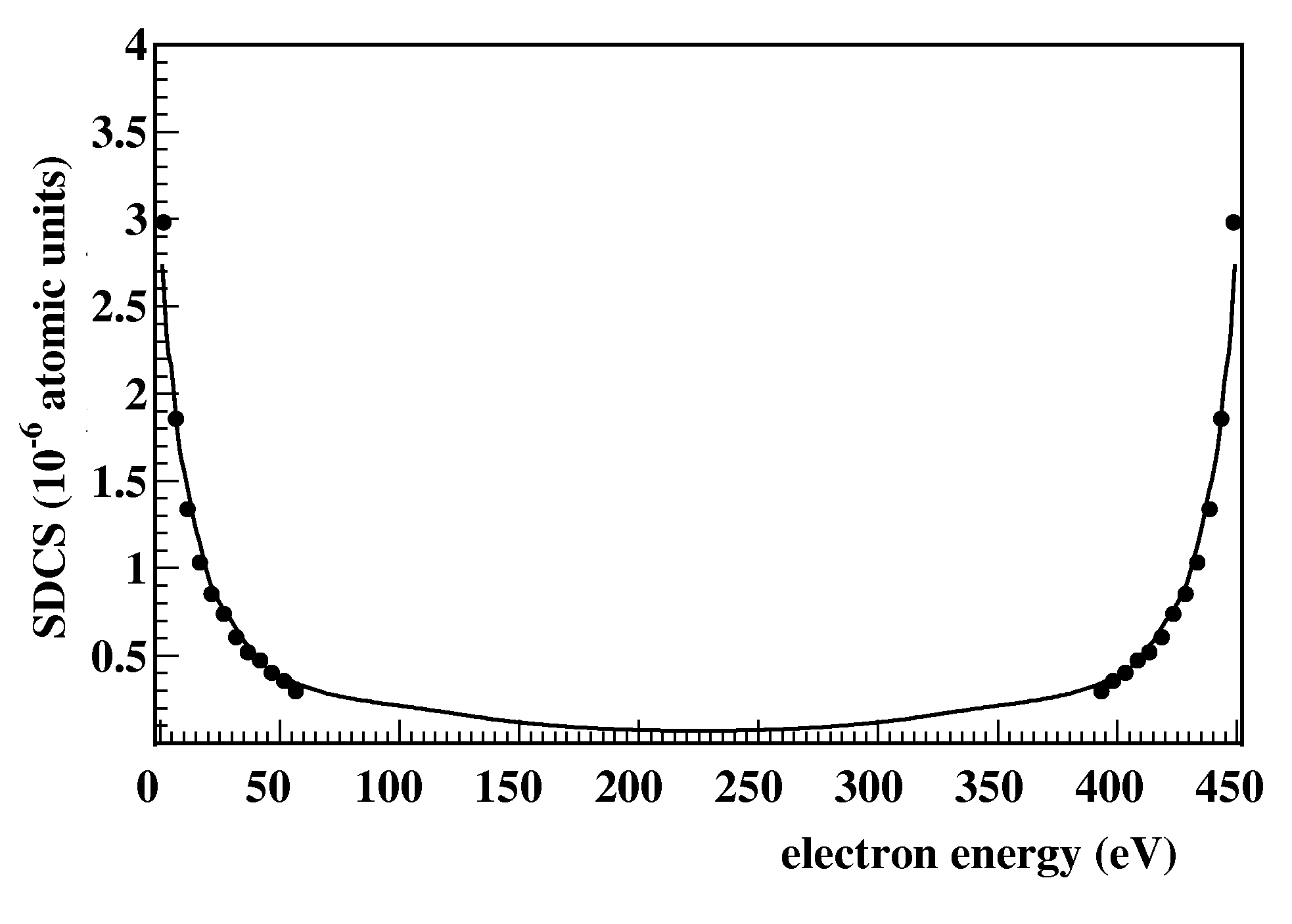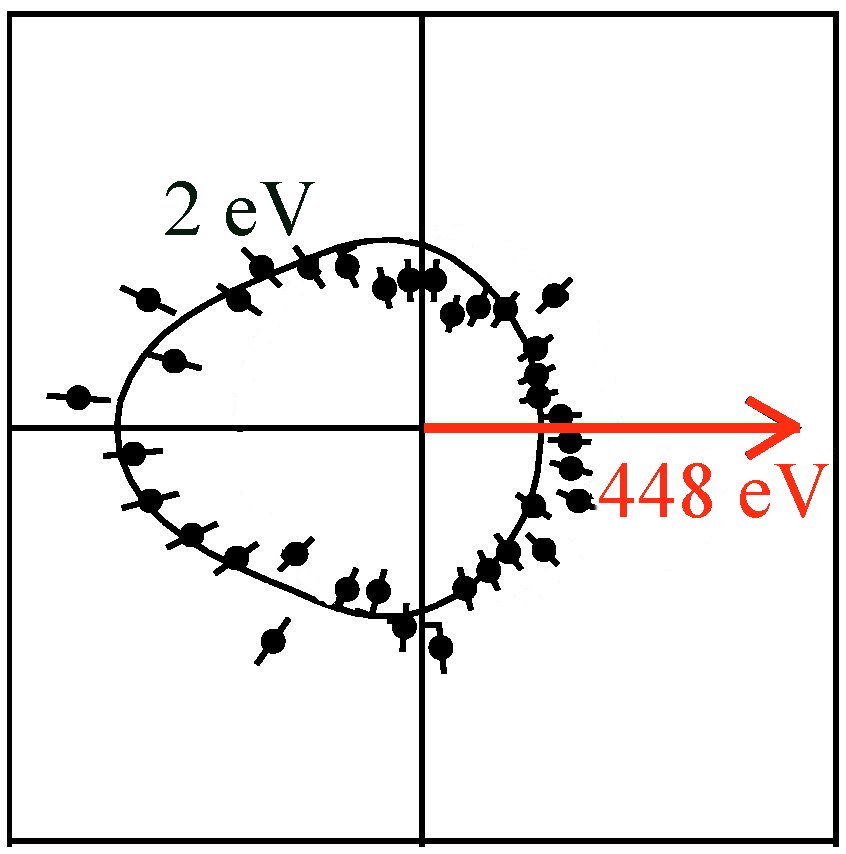Mechanisms of Photo Double Ionization of Helium by 529 eV Photons
|
We have measured fully differential cross sections for photo double ionization of helium 450 eV above the threshold using the COLTRIMS technique.
Results 
Figure 1: Energy sharing; presented is the single differential cross section versus the electron energy. The dots are the experimental datas, the line is a CCC calculation. 
Figure 2: The asymmetry parameter is plotted versus the electron energy; at 0 the electrons are emitted isotropically, if the asymmetry parameter is 2 you find a dipole distribution for the electrons. To answer the question: "Is our assumption of a two-step process - in which one electron absorbs the photon energy and also its angular momentum and, subsequently, the second electron is either shaken off or knocked out - valid?" we looked for the energy sharing of the two electrons and the asymmetry parameter which gives us information how the electron is emitted with respect to the polarisation. Answer:
We have found experimentally an extremely asymmetric energy sharing between the two electrons and an angular asymmetry parameter b~2 for the fast electrons and b~0 for the slow electrons. An asymmetric energy sharing together with the asymmetry parameter b~2 for the fast electrons indicate that the fast electron absorbs not only most of the photon energy but also its angular momentum. This means we have a two-step-model: In the first step the photon energy and its angular momentum is absorbed by the first electron; in the second step the remaining electron is either shaken off or knocked out. 
Figure 3: The fast electron which has an energy of 448 eV is fixed by the red arrow. The TDCS of the slow electron (2 eV) is plotted. The solid line is a CCC calculation. At the same time, the slightly faster electrons (20 eV and more) are mostly emitted at 90o to the fast electron indicating an (e,2e) like collision between the two electrons. 
Figure 4: Here the fast electron has an energy of 420 eV. The TDCS of the slow electron which has an energy of 30 eV is plotted. Again the solid line is a CCC calculation.
The shake off "produces" very slow electrons while higher energetic electrons need to get the their momenta from the other electron by a binary encounter.
Download transparencies of the lecture "Mechanisms of Photo Double Ionization of Helium by 529 eV Photons": in Powerpoint format, uncompressed (808 kb) or compressed as Zip file (420 kb). Experimental proof of an additional third double ionization mechanism see here and our paper |
